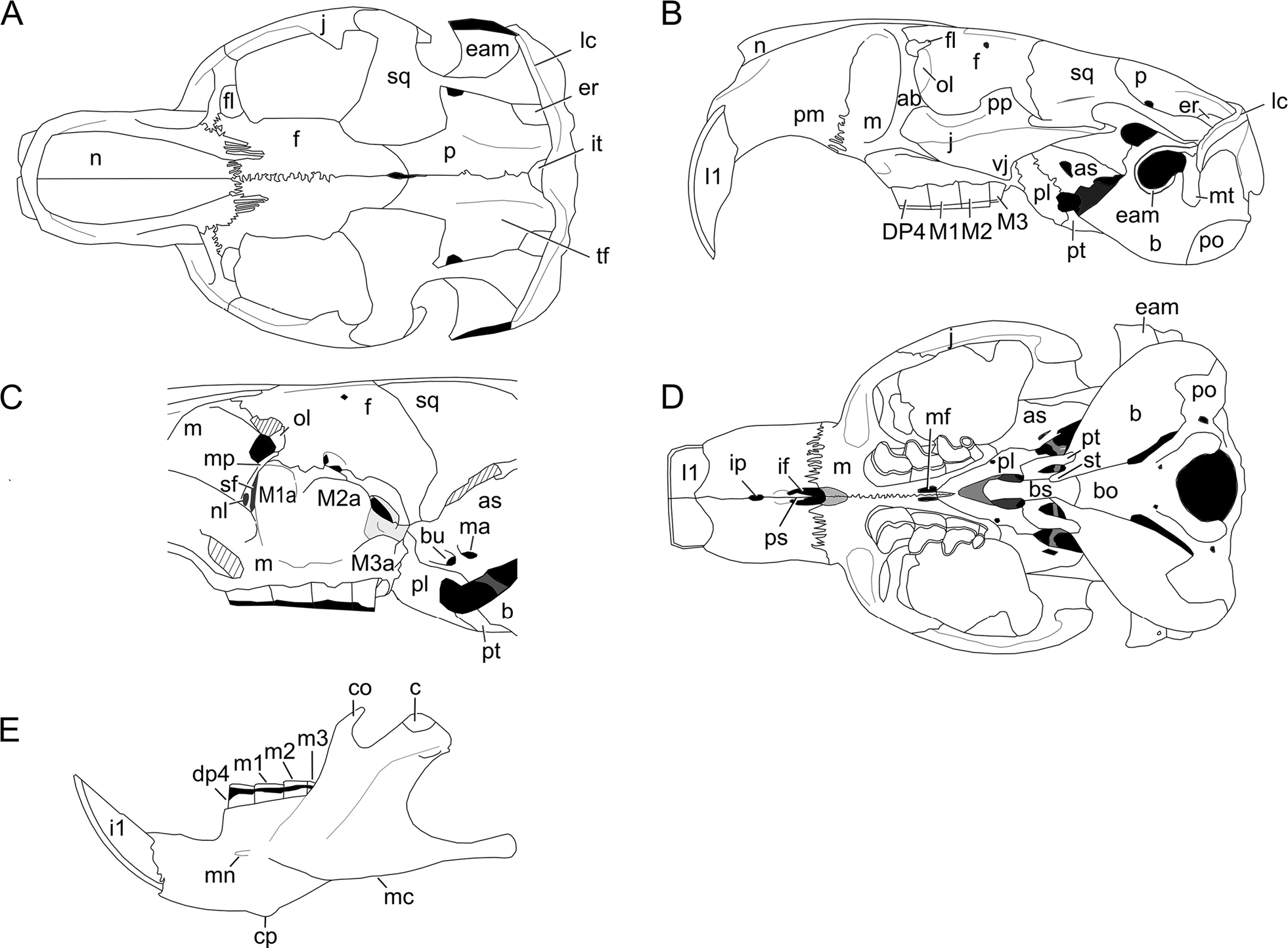
|
||
|
Nomenclature of craniomandibular traits (modified from Brook et al. 2022). Abbreviations: ab, antorbital bar; as, alisphenoid; b, auditory bulla; bo, basioccipital; bs, basisphenoid; bu, buccinator foramen; c, condyle; co, coronoid process; cp, chin process; dp4, lower deciduous premolar; DP4, upper deciduous premolar; eam, external auditory meatus; er, petrosal epitympanic recess; f, frontal; fl, facial portion of lacrimal; I1, upper incisor; i1, lower incisor; if, incisive foramen; ip, interpremaxillary foramen; it, interparietal; j, jugal; lc, lambdoid crest; m, maxilla; ma, masticatory foramen; mc, masseteric crest; mf, major palatine foramen; mn, mandibular notch; mp, maxillary plate; mt, mastoid apophysis; m1-m3, lower molars; M1-M3, upper molars; n, nasal; nl, foramen into nasolacrimal canal; ol, orbital portion of lacrimal; p, parietal; pl, palatine; pm, premaxilla; po, paraoccipital process; pp, paraorbitary process; ps, premaxillary septum; pt, pterygoid; sf, sphenopalatine fissure; sq, squamosal; st, styliform process; tf, temporal fossa; vj, ventral jugal process. |